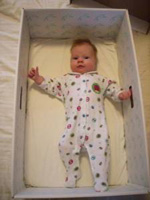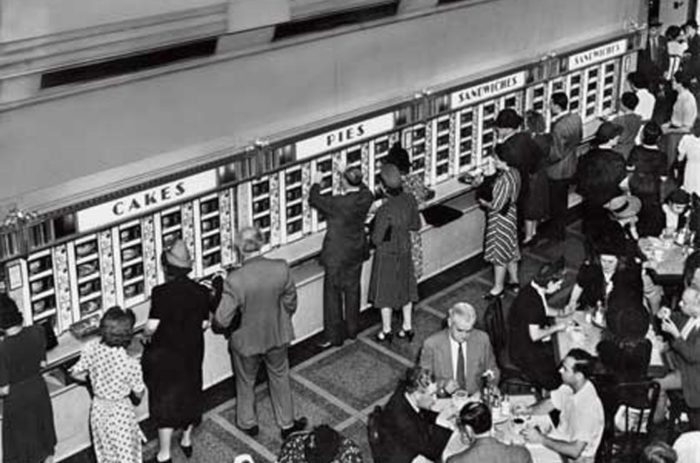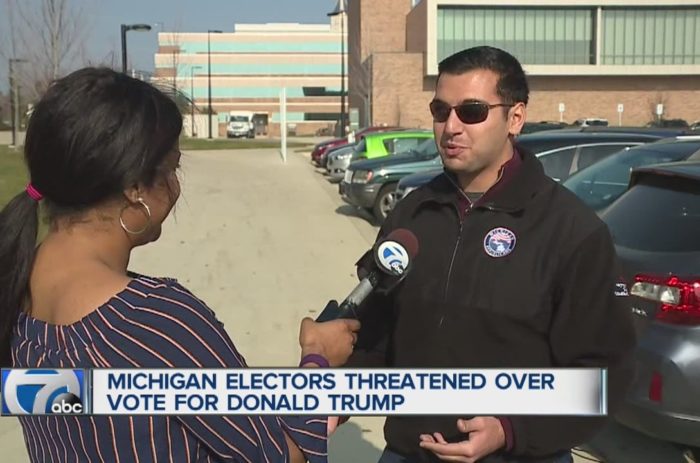The following is an excerpt from OpinionJournal.com’s “Best of the Web” written by the editor, James Taranto.
 Answers to Questions Nobody Is Asking
Answers to Questions Nobody Is Asking
- “Why Finnish Babies Sleep in Cardboard Boxes”–headline, BBC website, June 4
- “Why Chris Christie Might Be a Genius”–headline, RealClearPolitics.com, June 5
What About the Eighth Amendment?
“Austin to Get Non-Stop Flights to Cleveland”–headline, Austin American-Statesman, June 5
Look Out Below!
“A group of about 100 high school students traveling from New York to Atlanta were thrown off a flight, along with their chaperones, after the pilot and crew lost patience with some kids who wouldn’t sit down and put away their cellphones.”–Associated Press, June 4
News of the Tautological
- “Killer Bees Responsible for Texas Death”–headline, United Press International website, June 3
- “Flammable Materials Blamed for Deadly Blaze in China”–headline, Xinhua, June 4
The Parochialism of ‘Diversity’
Boston Marathon bombing defendant Dzhokhar Tsarnaev and his deceased brother, Tamerlan, lived in Cambridge, Mass., a famously liberal college town. To many of their erstwhile neighbors, that is a disturbing irony.
Consider this arresting quote from The Wall Street Journal’s April 20 story about the brothers: “Attorney Andrea Kramer said Friday her sons played on the [Cambridge Rindge and Latin School] varsity soccer team while Dzhokhar played on the junior-varsity squad. Dzhokhar ‘wasn’t “them.” He was “us,” ‘ Ms. Kramer said. ‘He was Cambridge’ and part of a community whose ‘strength and beauty’ is its diversity.”
Today’s New York Times features a whole story on the same theme, under the headline “Link to Marathon Bombing Rattles City Known for Its Tolerance.” “Cantabrigians,” as they portentously call themselves, are confused, although they have not lost their capacity for self-congratulation:
Jeff Young, the superintendent of Cambridge Public Schools, said the experience had been disorienting for the district. “How is it,” he asked, “that a person who grew up in a place like this ends up in a place like that?” . . .
“In another school, a kid like that could have felt really alienated, but that’s really not the case at that high school,” said Nancy Alach, a parent of one of Mr. Tsarnaev’s classmates. “It’s hard to figure out how he felt so angry or alienated, that he was able to get to the point of doing something like that.”
Bob Binstock, a 55-year-old writer who has lived here for more than 35 years, found himself looking repeatedly at a photograph of one of his daughters and Mr. Tsarnaev, who graduated alongside her.
“I think that Cambridge is like a paradise of some kind,” Mr. Binstock said. “The fact that you can say about Dzhokhar, for instance, is that he was probably more welcomed and more easily incorporated into the environment at C.R.L.S. than he would have been at almost every other high school in the country, but that doesn’t mean there aren’t big gaps.”
Mr. Binstock’s daughter, Rae, said she and her classmates found themselves defending a hometown that many of them, now in college, are trying to move beyond. “Respect is a big part of it, and it’s a very big part of Cambridge,” said Ms. Binstock, 19, who is studying playwriting and anthropology at Columbia University. “Other communities don’t have to deal with the idea that lots of communities of different people have to coexist.”
Her father continued, “Maybe this is something we can learn from this.” He added: “Cambridge is very welcoming, and it’s very diverse. Maybe the acceptance to that blinds us to the fact that there may be more difficulty than people realize.”
Cambridge, it is clear, is a town full of communal narcissists. What’s striking about this passage is that while the Cantabridgians quoted are quite articulate in describing their own professed virtues, when the subject turns to the cognitive dissonance caused by Dzhokhar Tsarnaev’s alleged crimes, they are reduced to blather: “That doesn’t mean there aren’t big gaps.” “There may be more difficulty than people realize.” What does any of that even mean?
One is tempted to chuckle at their naiveté and leave it at that. But it’s important to understand the way these people think, because their way of thinking has wide cultural influence. And naiveté isn’t the only problem with the ideologues of “diversity” or “multiculturalism.” They’re also quite frequently hypocritical, which is to say that they are selectively and sometimes harshly intolerant even as they extol tolerance. Anyone who’s spent time on an American college campus in the past 30 years–and that includes a large proportion of Cambridge residents–is familiar with that phenomenon.
The naiveté and the hypocrisy both are the result of a parochialism that is at the heart of this supposedly cosmopolitan ideology.
To illustrate the point, let’s try a thought experiment based on a local news story from 750 miles away. WNEM-TV in Saginaw, Mich., reports that in nearby Bay City, an unidentified man “is stirring controversy in his neighborhood after hanging flags that many find racially insensitive.” The banner is the Confederate Battle Flag, also known as the Stars and Bars. “The worst part, [a neighbor] says, is the confederate flag recently replaced a flag with a swastika on it.”
“I was driving by one day last week and saw it and I thought, Wow,” Darold Newton of the local NAACP chapter tells the station. “Newton admits flying the flag is protected under the first amendment. Little can be done to get the neighbor to remove it. But he says he’s still shocked that someone would put it in their window in such a diverse community.”
Let us pause to note that Newton is a model of true tolerance. The flag shocks and offends him, but he understands that in a free country, its owner has the right to display it on his own property. Other neighbors, according to the station, “say the flag must go,” but apparently they haven’t sought to have it removed by force. The Bay City police “say they haven’t received any complaints about the flags.”
Now for the thought experiment. Suppose the Bay City Confederate picked up stakes, moved to Cambridge, Mass., and put the Stars and Bars in the window of his new house there so that it was visible from the street. How would our tolerant Cantabridgians react?
Perhaps with the same restraint Darold Newton and the other Bay City people have shown, though you’d have to give us pretty good odds to get us to bet on that outcome. It seems safe to surmise, however, that their attitude would not be welcoming–that, to borrow Andrea Kramer’s terms, they would view their new neighbors as one of “them” rather than “us.”
Multiculturalists are no less prone than other human beings to be hostile to out-groups. It’s just that they are willing to accept almost anyone foreign, or otherwise identifiably different, into their in-group. The only out-groups they readily recognize are familiar, domestic ones, like the “other communities” that, according to Rae Binstock, “don’t have to deal with the idea that lots of communities of different people have to coexist.” It all goes back to oikophobia.
A more abstract form of this parochialism is the multiculturalists’ frequent insistence that “only white people can be racist.” In this view, racism is perhaps the greatest moral failing of which human beings are capable–but nonwhites are absolved of moral responsibility for their racial prejudices.
But moral responsibility is the essence of humanity. It is what sets Homo sapiens apart from other animals. Assigning moral responsibility to whites while denying it to nonwhites is therefore a way of dehumanizing the latter. Multiculturalism turns out to be a disguised form of white supremacy.
For more “Best of the Web” click here and look for the “Best of the Web Today” link in the middle column below “Today’s Columnists.



